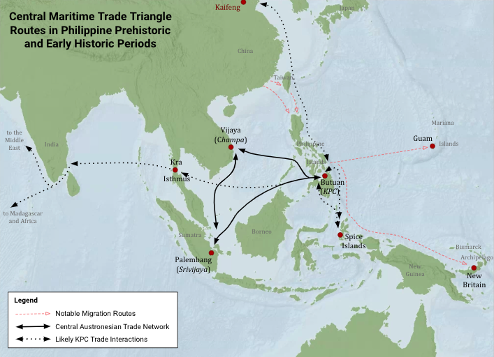VOLUME 17 NUMBER 1 (January to June 2024)

SciEnggJ. 2024 17 (1) 071-079
available online: March 31, 2024
DOI: https://doi.org/10.54645/2024171ZAK-61
*Corresponding author
Email Address: olivera@biology.utah.edu
Date received: February 6, 2024
Date revised: March 17, 2024
Date accepted: March 27, 2024
ARTICLE
Reconstructing Philippine history before 1521: the Kalaga Putuan Crescent and the Austronesian maritime trade network
2University of California, San Francisco (Emeritus), Wilson, Wyoming, USA
2Independent Researcher, Salt Lake City, Utah, USA
Using a novel combination of archeological and textual evidence, ceramic analysis and recent genetic studies, we propose the existence of a lost Austronesian Kingdom, the Kalaga Putuan Crescent (KPC) in the Southeastern Philippine Archipelago, a kingdom which apparently existed as a coherent Austronesian cultural and political entity for over 13 centuries. Recent evidence suggests that the KPC was an early site of innovation in the development of Austronesian maritime technology, leading to the emergence of the Central Maritime Triangle (comprising the KPC, Champa and Srivijaya), a trade network that was central to the exchange of goods between the Spice Islands, China, India, the Middle East and Europe. At its cultural and political height, the previously unrecognized KPC was a sophisticated and influential center of Austronesian culture and maritime trade.
© 2025 SciEnggJ
Philippine-American Academy of Science and Engineering